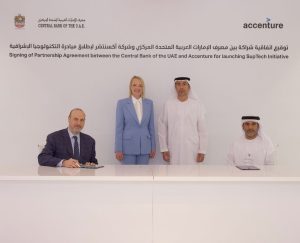
Sub-Saharan Africa (SSA) presents a new frontier for the global investor, but political and economic risks abound. Differentiating between rough diamonds and plain stones across the region is essential. We highlight six countries that have had strong performance over the last five years and the most promising outlook in the region for 2015: Angola, Kenya, Mozambique, Nigeria, Tanzania and Uganda, a QNB press release said.
Since 2009, foreign investors have been increasingly drawn to SSA in search of higher yields amidst historically low global interest rates. Growth across SSA, excluding South Africa (SA), is expected to remain strong in 2014-15 at over 6.5%, based on the latest IMF forecasts.
Growth will be driven by the ongoing infrastructure investment boom, vibrant services and robust production in agriculture. A number of countries in SSA face large infrastructure deficits, which they aim to close through heavy investments and with foreign support. A number of countries stand out as real economic diamonds.
The fastest growth in our selected SSA economies is in Mozambique. Growth has been driven by an investment boom under large megaprojects. In addition, substantial infrastructure investments are being made in the energy sector.
Although, the current account deficit is large (almost 50% of GDP), this is related to imports for capital-intensive investments in natural gas extraction, which are largely financed by foreign direct investment through the capital and financial account. Overall, the IMF expects Mozambique to grow by 8.2% in 2015.
Tanzania’s growth is driven by services and investments, mainly in the energy sector. Gold is the primary export commodity, but large natural gas reserves are being developed, leading to substantial investments. Imports related to the investment program are high, leading to an estimated current account deficit of 13.7% of GDP in 2014.
Tanzania is relatively dependent on external debt to finance this deficit. As a result, the performance of the Tanzanian Shilling this year has been worse than the other five currencies in our peer group. However, Tanzania’s growth is projected stay high at 7.0% in 2015, according to the IMF.
Nigeria is now the largest economy in Africa following the rebasing last April that doubled its GDP to USD523bn (see our recent commentary, Nigeria Presents Major Opportunities for Foreign Investors).
As the largest and most populous economy in SSA, Nigeria has grown rapidly with a continued expansion of manufacturing and services. High revenue from the oil and gas sector ensures healthy current-account surpluses and should help financially back the 30-year USD3.1trillion infrastructure investment master plan. According to the IMF, Nigeria is expected to grow 7.3% in 2015.
In Kenya, agriculture is the dominant sector, but consumer services are expanding with urbanization and the spread of the middle class. The government is supporting infrastructure investments, which should help alleviate structural constraints, raising growth over the medium term.
Kenya continues to be the leader in mobile banking in the region, with over 30% of the population undertaking daily mobile banking transactions. The IMF expects Kenya to grow by 6.2% in 2015.
Uganda is in the process of developing a nascent oil sector. Substantial investments in the energy sector will, therefore, drive growth and further transport infrastructure investments are needed to alleviate bottlenecks.
This includes rail and road links to the port of Dar es Salaam in Tanzania and Mombasa in Kenya. Uganda’s growth rate should reach 6.3% in 2015.
Angola is the second-largest oil producer in SSA after Nigeria and is wealthy in other natural resources such as diamonds. The current account is expected to record a surplus of 4.1% of GDP in 2014.
Oil output growth has slowed slightly as production has declined at some mature fields, but growth is expected to pick up again going forward. The government is introducing protectionist measures to try and support the development of local non-oil industries. The IMF expects Angola to grow by 5.9% in 2015.
However, there are a number of risks facing investors, which make some countries more likely to be successful than others. There are security issues, poor business environments, weak project implementation, and, with expansionary fiscal policy across the region, doubts about the sustainability of fiscal deficits and public debt. Furthermore, there are external risks, particularly for countries that are heavily dependent on commodity exports. Finally, the Ebola virus could impact growth in countries that are most exposed to the outbreak (Guinea, Liberia and Sierra Leone).
To conclude, there are plentiful opportunities throughout SSA as investment in infrastructure relieves bottlenecks across the region. This should unleash the full potential of consumer services for large and fast growing populations that are becoming increasingly wealthy.
However, there are a number of challenges facing the region. Some diamond economies are likely to be better equipped to tackle these challenges and thus to outshine the rest.
Source : Qatar News Agency












